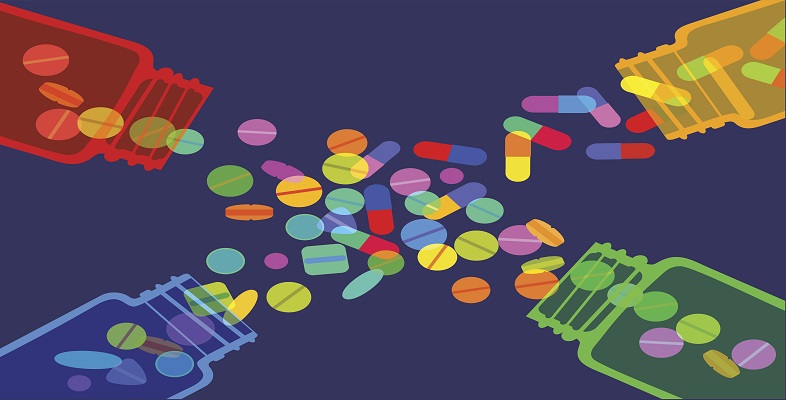3.3 Experimentally evolving antibiotic resistance
Most animals evolve over millions of years. However, because bacteria grow and evolve so rapidly, scientists can study the evolution of antibiotic resistance in the laboratory. You will now look at an experiment which shows how bacteria adapt to survive increasingly higher doses of antibiotic (Baym et al., 2016).
Activity 4 Evolution in action
Watch the following video taken from an episode of the BBC’s Horizon programme. Here, researchers from Harvard University and Technion-Israel Institute of Technology describe an experiment to evolve antibiotic-resistant bacteria in the laboratory.

Transcript: Video 4 Experimental evolution of antibiotic resistance.
In the next video you will watch what happens when bacteria grown on a plate containing increasing concentrations of antibiotics like the one described in Video 4. This plate is known as a Microbial-Evolution and Growth Area (MEGA) plate. Before you watch the next video, note down what you think will happen to the bacteria as they grow on the MEGA plate.
Discussion
As bacteria grow to fill the area of the MEGA plate, with no antibiotic they begin to compete for resources, meeting one of Darwin’s conditions for evolution – a struggle for existence.
At this point, mutations occur which allow some bacteria to survive in the area of the plate containing antibiotic. These bacteria have a survival advantage over the antibiotic-sensitive bacteria and grow and reproduce to cover the area of the plate containing a low antibiotic dose. As they fill this area of the plate, they also begin to compete for resources and the cycle of mutation, selection and growth repeats.
Now click on the following link to watch a video showing a time-lapse recording of bacteria growing on the MEGA plate [Tip: hold Ctrl and click a link to open it in a new tab. (Hide tip)] . Then answer the questions below.
1 How many different mutants have reached the 1000× antibiotic concentration at the end of the experiment? (Hint: you will need to watch until the end of the video.)
Answer
Using the coloured tree diagram at the end of the video, we counted 16 different mutants that reached the 1000× antibiotic concentration at the end of the experiment.
2 Would you expect the first mutant bacteria that appear (those that occur at the no antibiotic:1× antibiotic boundary) to grow on the 1000× antibiotic region on the plate?
Answer
It is unlikely that the resistance mutations that allowed bacteria to survive on the 1× dose of antibiotic would be sufficient for bacteria to survive on the 1000× dose. It is more likely that bacteria would require multiple antibiotic resistance mutations to survive on the 1000× dose.
3 Did your predictions from the first part of this activity match the experimental results?
Discussion
You may not have exactly predicted what would happen in the experiment but you may have been able to make some suggestions about how bacteria acquire mutations in order to cross the no antibiotic:1× antibiotic boundary.
Now that you have watched the experiment, you may want to reread the discussion from the first part of this activity.
